Dynamic mics are essentially live-performance microphones. Sure, any mic type can be used under any circumstances, but dynamic microphones are the most hardy and robust out of the pack. They're more likely to survive high sound pressure levels and have fewer requirements than their sensitive condenser microphone cousins. They are also usually less expensive than condenser microphones and are suitable for the loudness of excited guests and bleeding guitar cabinets alike. Let's take a look at why and how they're used by podcasters to record episodes.
What's the difference between a condenser and a dynamic microphone?
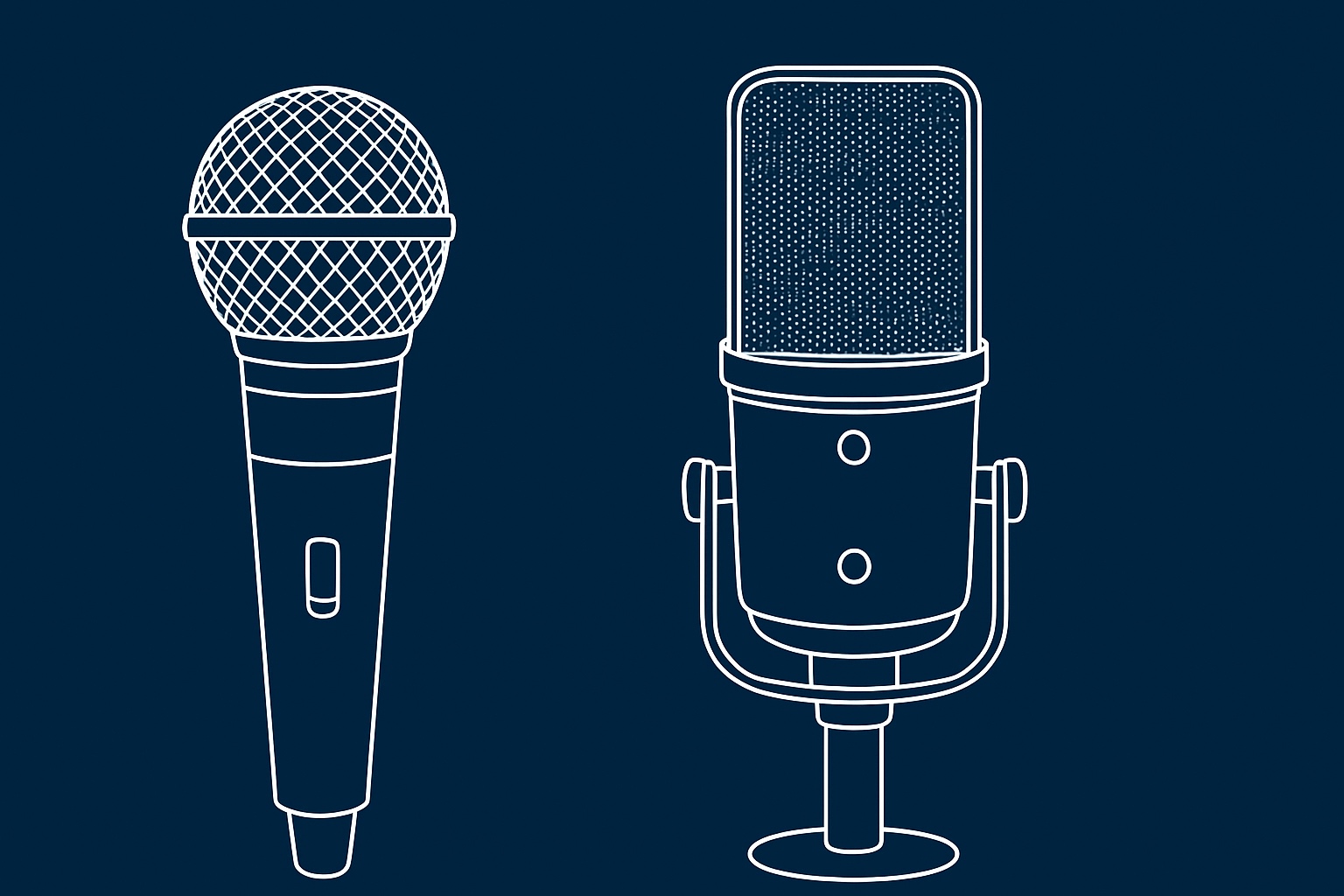
A dynamic microphone is more suitable for capturing loud and strong sounds like drum kits or loud vocals. They're better for live settings where you may deal with a lot of background noise. Condenser mics, on the other hand, are designed to capture more delicate sounds and at a wider frequency range, particularly in studio settings like spoken vocals.
Podcasters can use both dynamic or condenser mic to record their shows, but which one is the best for your setup it depends on how you intend to use it and in what enveroment.
How exactly does a dynamic microphone work?
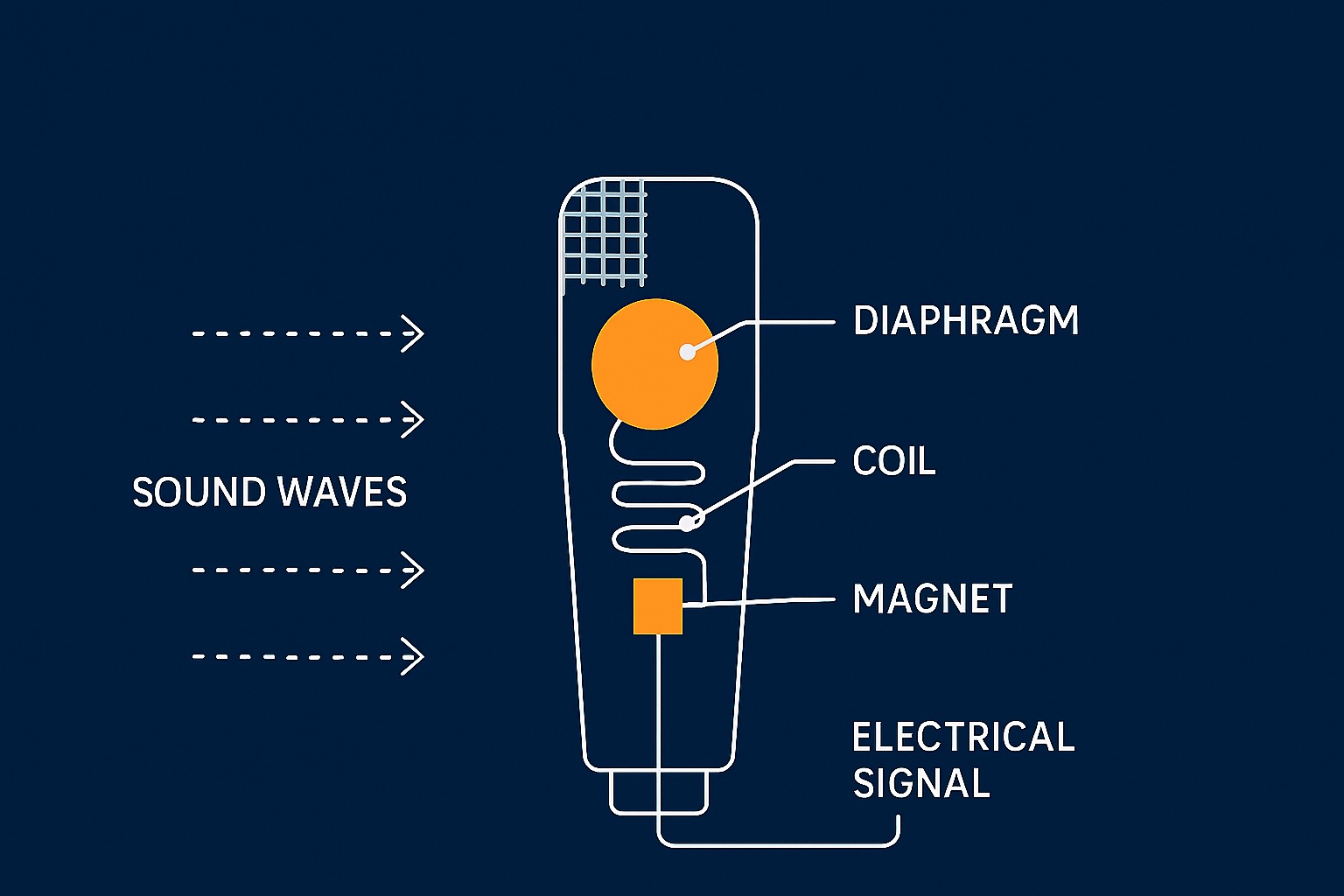
Dynamic mics (aka "moving coil microphones"), are fairly simple to understand. The mic consists of a coil of wire glued to the back of a membrane that sits inside a strong magnet. When sound waves hit the membrane, it moves in sync with the waves. This motion moves the coil within its surrounding magnetic field, and that induces a small signal voltage in the coil, which is then translated into an electrical signal.
The headbasket (also known as the grille), has the role of protecting the inner components while shaping the frequency responsonse of the microphone. Inside the headbasket, you will usually find a foam material, that acts as a pop-filter / windshield. Some dynamic microphones such as the Shure SM7B, has the pop filter on the top of the headbasket.
How to use a dynamic microphone?
Using a dynamic microphone is extremely easy. All you need to do is connect the female XLR connector to the microphone and the male XLR connector to your audio interface. If you own a USB microphone, just connect the USB C connector to the microphone and the USB A or USB C connector to the computer directly.
Place your microphone on a sturdy stand. Most dynamic microphones will have a microphone clamp that you can attach to your stand. You can hold a dynamic microphone in your hand; however, this will most likely generate some low-frequency rumble, which could ruin your podcast recordings, so placing it on a stand is the best option.
Most dynamic microphones have an internal pop-filer, but it may not be enough to stop all the plosives. Placing an extra pop filter in the front of your dynamic microphone will stop any chance of plosives getting recorded. This may make your audio sound a little duller, but it's not something that EQ can not solve.
What if the capsule of your dynamic microphone gets rusty?
This can happen over time, especially if you touch the microphone with your lips or store it in a high-humidity environment. If this happens, don't panic. Most dynamic microphone manufacturers sell parts you can buy for as little as 10$. For example, if you want to change the capsule of a Shure SM58, you can buy an original replacement for cheap.
Off-Axis Polar Pattern Rejection
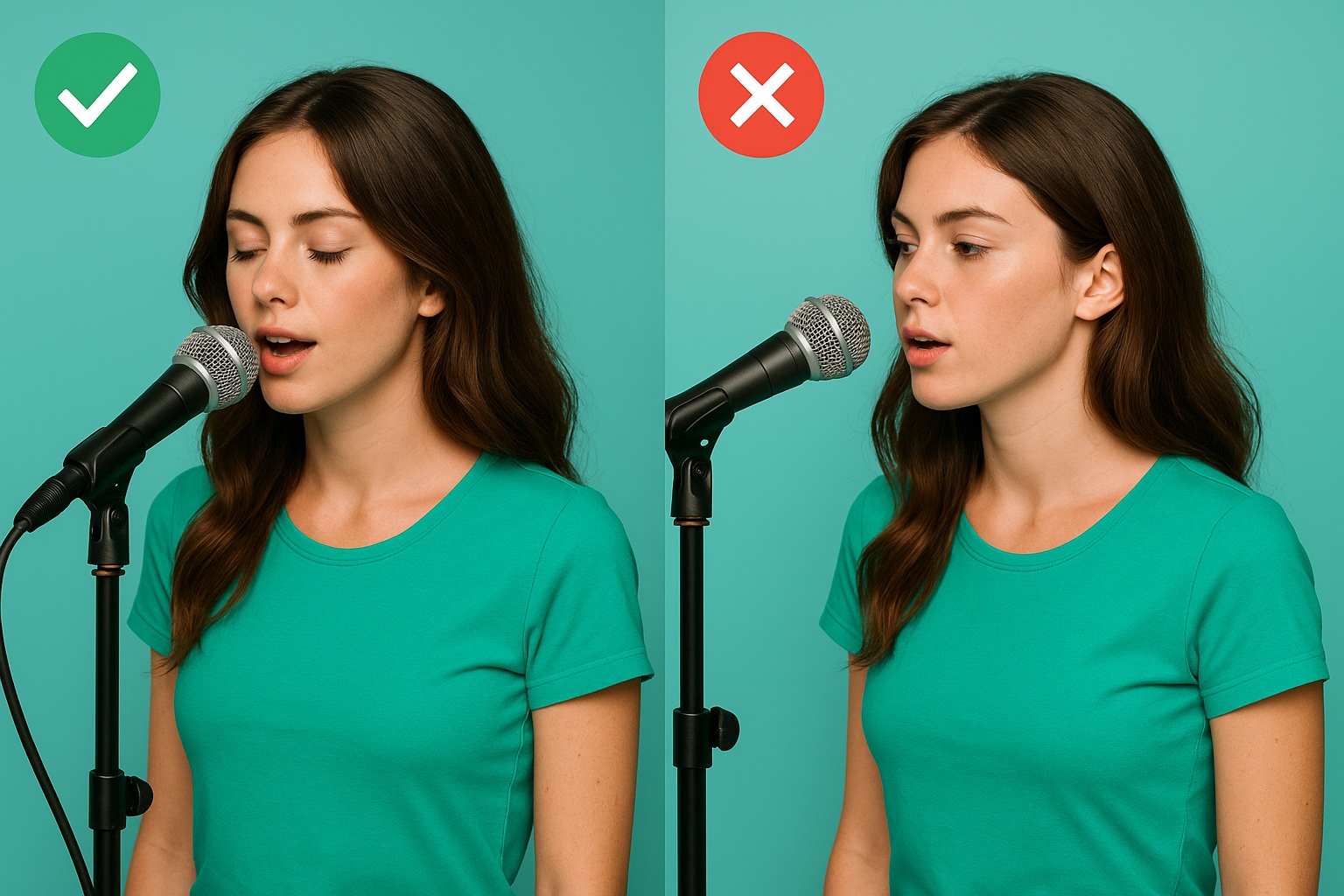
Most dynamic microphones, due to their cardioid polar pattern, feature areas around the capsule where sound rejection occurs. The top of the microphone typically captures sound most effectively (known as a top-addressed microphone), whereas speaking into the lower half of the capsule can result in recordings that sound distant and weak. This aspect of a dynamic mic is good and bad at the same time. This configuration is ideal because the parts that reject sound reject background noise as well; it is less ideal because you will need to speak into the top of the microphone at all times, leaving little room for adjustment.
Proximity Effect
The closer you talk into a microphone, the more low frequencies will start to build up, creating a duller/darker tone. You should talk directly into the front of the mic, and you should be quite close in order to get a clear recording; this also makes the recording duller than what you would get on a condenser microphone.
With condenser microphones you can get away with recording from a distance of even 5-10cm, so they are less prone to the proximity effect.
EQ can play a crucial role here in correcting this effect, and on a dynamic microphone we will most often lower the frequency response around 100-300 Hz, for a brighter sound.
Other types of microphones
If dynamic mics are designed for mobile and live use, what are some of the other purpose-built microphone types?
Condenser microphones
Condenser microphones are commonly used in music and podcast studios. Some people prefer the sound quality and warmth of condenser microphones compared to dynamics. However, condensers are designed for quiet studio recording and do not perform well in living rooms or public places with background noise. They are sensitive and not very good at reducing room noise. They also require a 48V phantom power source, a common feature on mixers and audio interfaces. Shopping for gear? Find out more about condenser microphones.
Ribbon microphones
Ribbon microphones are a type of extremely thin aluminium ribbon used as an electrical conductor instead of a membrane and coil. This design produces sound with greater accuracy because the ribbon can follow the sound waves more precisely. In addition, since it involves only one conductor in the magnetic gap, ribbon mics generate much lower level output than traditional moving coil capsules.
Ribbon microphones are rarely used in podcasting; they are a lot more expensive and even more sensitive than condensers. On top of that, if by mistake you turn on the 48v while the microphone is connected, there is a high chance of you destroying it.
Noise-cancelling microphones
A noise-cancelling microphone is designed to reject background noise and focus on close sounds. It uses a pressure-gradient design and acoustic labyrinths (whatever that means) 😅 to cancel out ambient noises and unwanted audio signals. Pretty amazingly, these microphones make a mini-recording of the ambient room noise signal in real-time and then cancel it while preserving your voice!
Tip: If you don't have any weekend plans, check out this endless list of all microphone types.
How much does a dynamic mic cost?
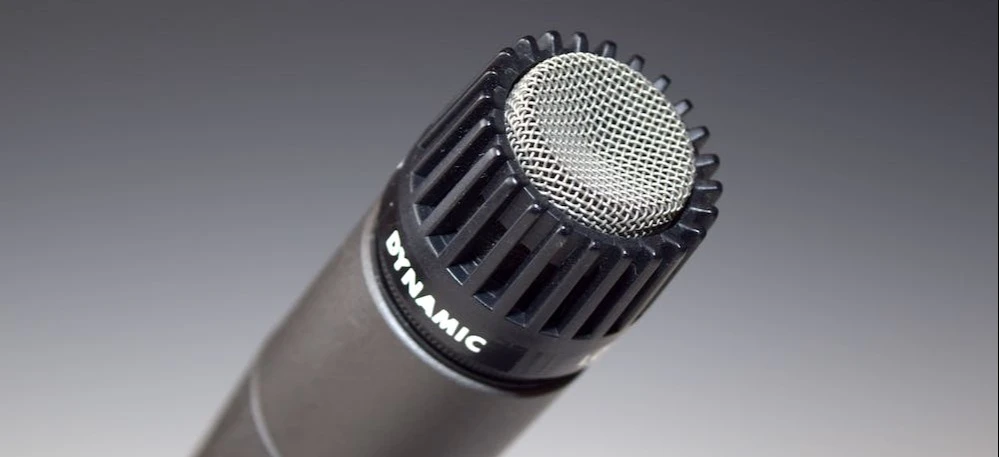
Good news, everyone! Dynamic microphones are less expensive than almost any other type of microphone, and they last for ages. Typically, budget-friendly dynamic mics start around $50, while higher-end models can range up to a few hundred dollars. If you're looking for an all-rounder mic, then something in the middle would be a great choice.
Choosing a microphone as a podcaster isn't a huge deal. You're probably not a sound engineer recording musical masterpieces, just voices! Mics don't have superpowers that make your stories or guests amazing. So, if you don't know exactly what a cardioid pattern is, don't dive into the overwhelming world of options. Just buy something decent within your budget that has good reviews. Then, focus on creating an awesome show. Less stress!
Pros and cons of dynamic mics
Pros
- Cost: less expensive than condenser mics.
- Build: lighter and more durable than condenser mics.
- Ease of use: dynamic microphones don't require phantom power.
- Mobile: more trustworthy when recording on the road or in public.
- Loudness: good for loud voices, a kick drum or field recordings
- Size: smaller and less obstructive on video.
Cons
- Sound quality: less sensitive than condenser mics and not ideal for capturing vocal subtlety.
- Directionality: usually doesn't feature multiple polar patterns, limiting directional recording options.
Which dynamic mic should I choose?
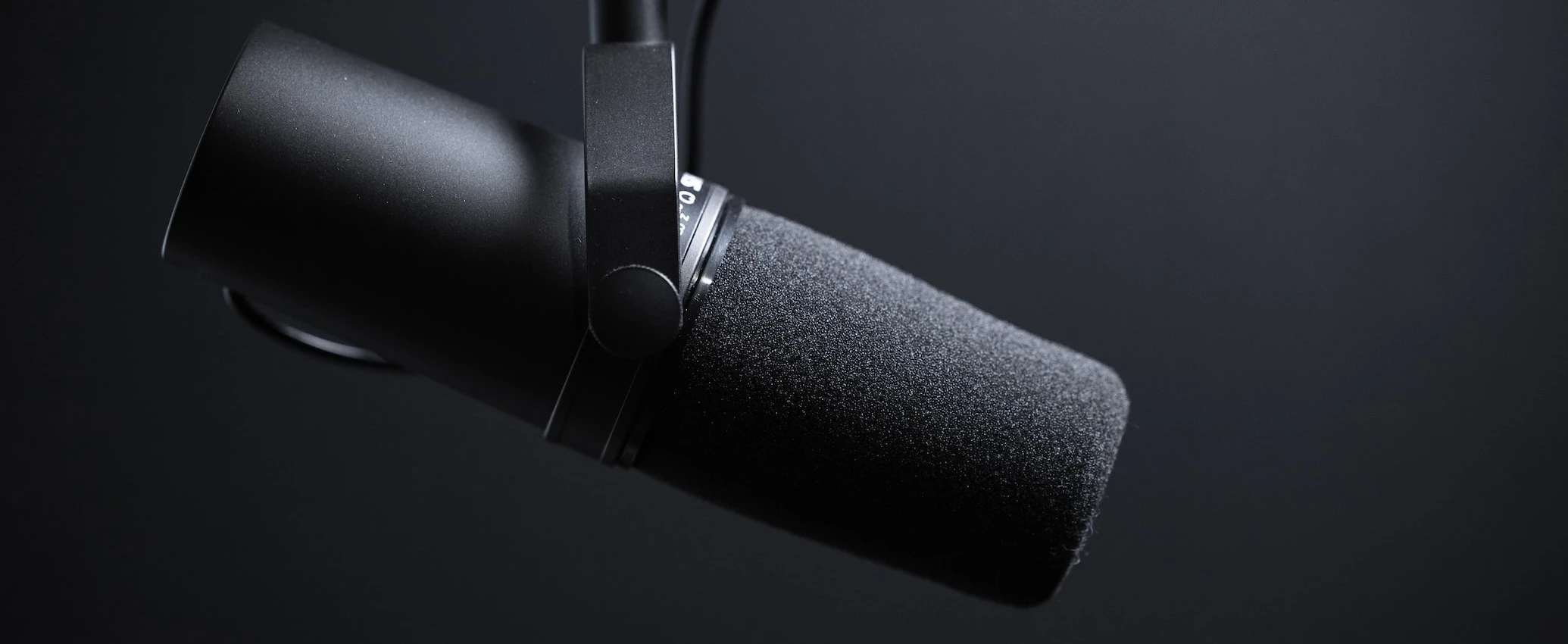
Short answer: most dynamic microphones are suitable for podcast recording, however there are certain dynamic mics that are more suitable for music production applications, so it is important to take that into consideration.
One example of a dynamic mic, that I would not recommand for voice recording is the Shure SM57. This microphone is an amazing piece of equipment at a great price, however it is more designed for instrument recording applications. You could still record a voice with this mic, but plosives could become an issue since it lacks an internal pop filter.
As with other microphone types, your choice will rely on these factors:
- Price: There's a wide range of quality across different models. Rather than agonize over the 'right' mic, focus on your show planning and guest relations.
- Volume: Loud guests will fare better with a dynamic microphone than a condenser. Again, the model of the microphone matters less than the right amount of input gain (ie loudness "allowance") on your recording device.
- Longevity: Is buying a $100 mic a pretty big once-off purchase for you? If so, get a tried-and-tested model that lasts forever rather than a newer design. The indomitable Shure SM58 is your best bet.
- Polar patterns: Dynamic mics generally have cardioid polar patterns. If recording directionality is a factor for you, you'll need to shop around.
Best dynamic microphones
Best in terms of quality? Not necessarily. More like the best in terms of value for money. Here are the Saspod staff picks ranked high to low by price.
Shure SM7B
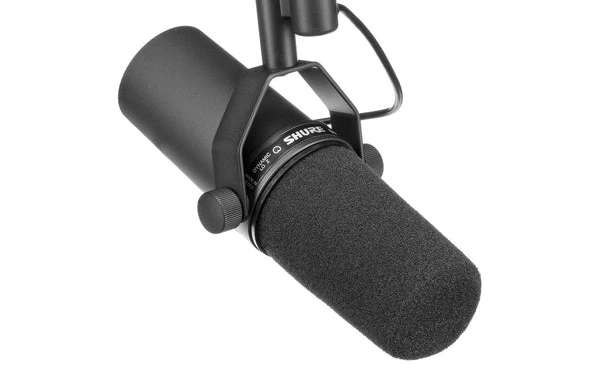
The Shure SM7B is probably most famous for being a reissue of the exact same vocal microphone that was used by Michael Jackson on Thriller. But it could just as easily be famous for being a 5-star workhorse with decades-long staying power. In terms of sound quality, the SM7B gives the 'upper class' of condenser mics a run for their money. It provides a warm, midrange-rich sound and is a reliable option in the studio, despite being more expensive than other condenser microphones. These features have made it the dynamic podcasting microphone in recent years.
View on Amazon
Rode PodMic

Podcasters and YouTubers want a quality broadcast with minimal setup. Size matters, especially when you're on video, and smaller is better. The PodMic is primarily designed to get out of the way. Be aware that this mic is the companion to the uber-popular Rodecaster Pro Podcast Production Studio. According to Rode, that is. The reality is that it works well with any audio interface or mixing desk. If you're looking for an affordable alternative to the oft-mentioned Blue Yeti, this is it.
View on Amazon
Shure SM58

SM58 With this ubiquitous dynamic microphone, Shure has done a great favour to humanity. No jokes! The Shure SM58 cardioid microphone reigns supreme as the ultimate live performance microphone, capturing the essence of iconic moments from historic speeches to the kick drum of the world's most famous bands. Perpetually affordable and as robust as a Nokia 3310, the SM58 has given a leg-up to countless musicians and podcasters in the world. Absolutely recommended for entry-level podcasters!
View SM58 on Amazon
Tips to extend your microphone's life
Invest wisely in a dynamic microphone and it will sing sweetly for your entire recording journey. Check out these magical tips for unlocking the secret to a microphone's eternal life.
- Leave a few silica packets in your mic case to prevent moisture damage.
- Pack it away or cover it with a cloth when not in use.
- Don't leave it in a hot car or anywhere hot. Heat damages the sensitive soldering.
- Get a proper case to protect it during transportation.
- Clean the capsule after use
Dynamic Microphones, A Great Choice for Podcasters
Dynamic microphones are a great option for anyone looking for versatility in their vocal applications. They provide good sound quality, have a variety of uses, and often last longer than other types of mics. When choosing a dynamic microphone, it's important to consider the application it will be used for and budget accordingly. With proper care and maintenance, dynamic microphones can provide years of reliable use.


Comments
No comments yet!